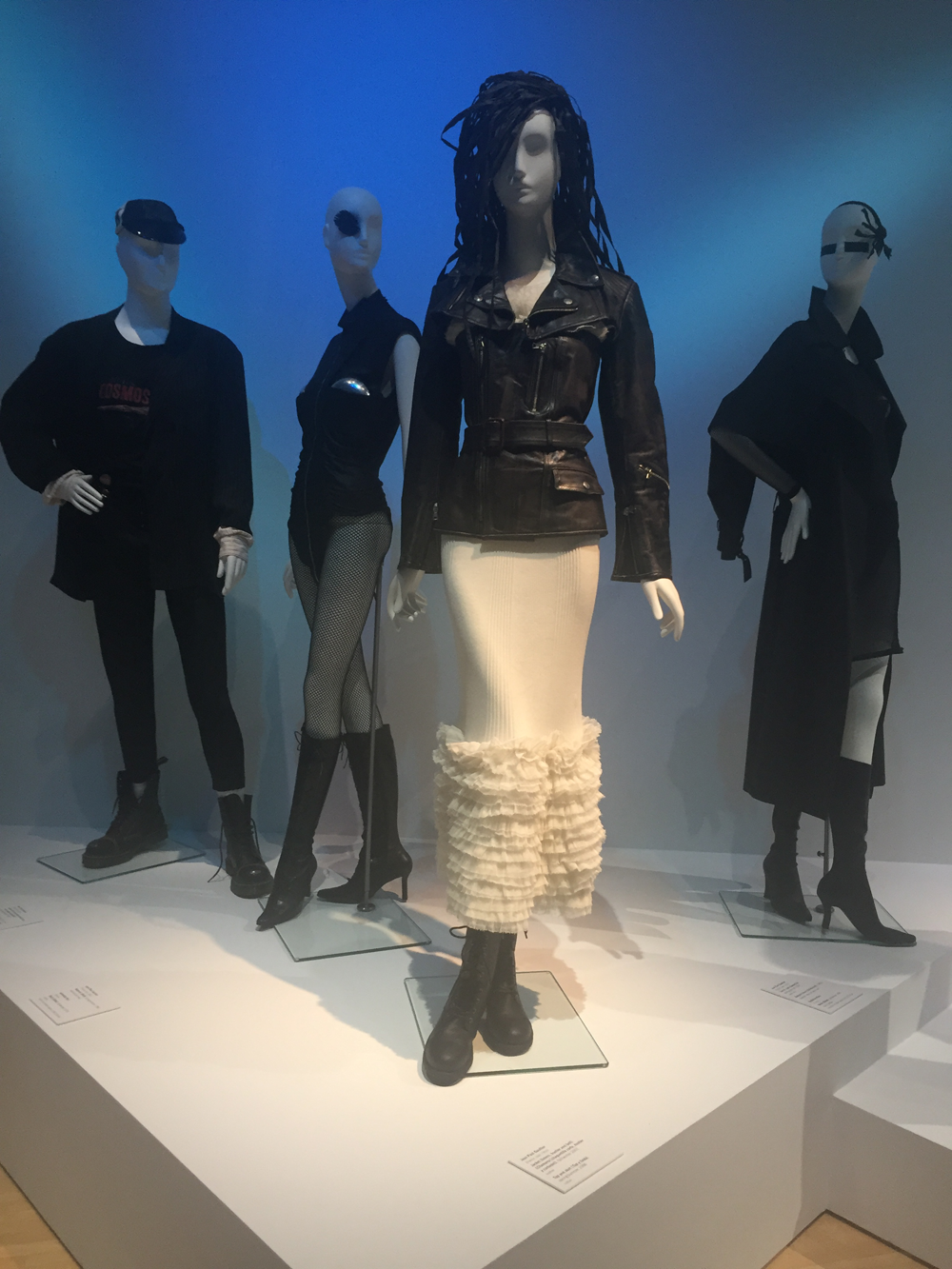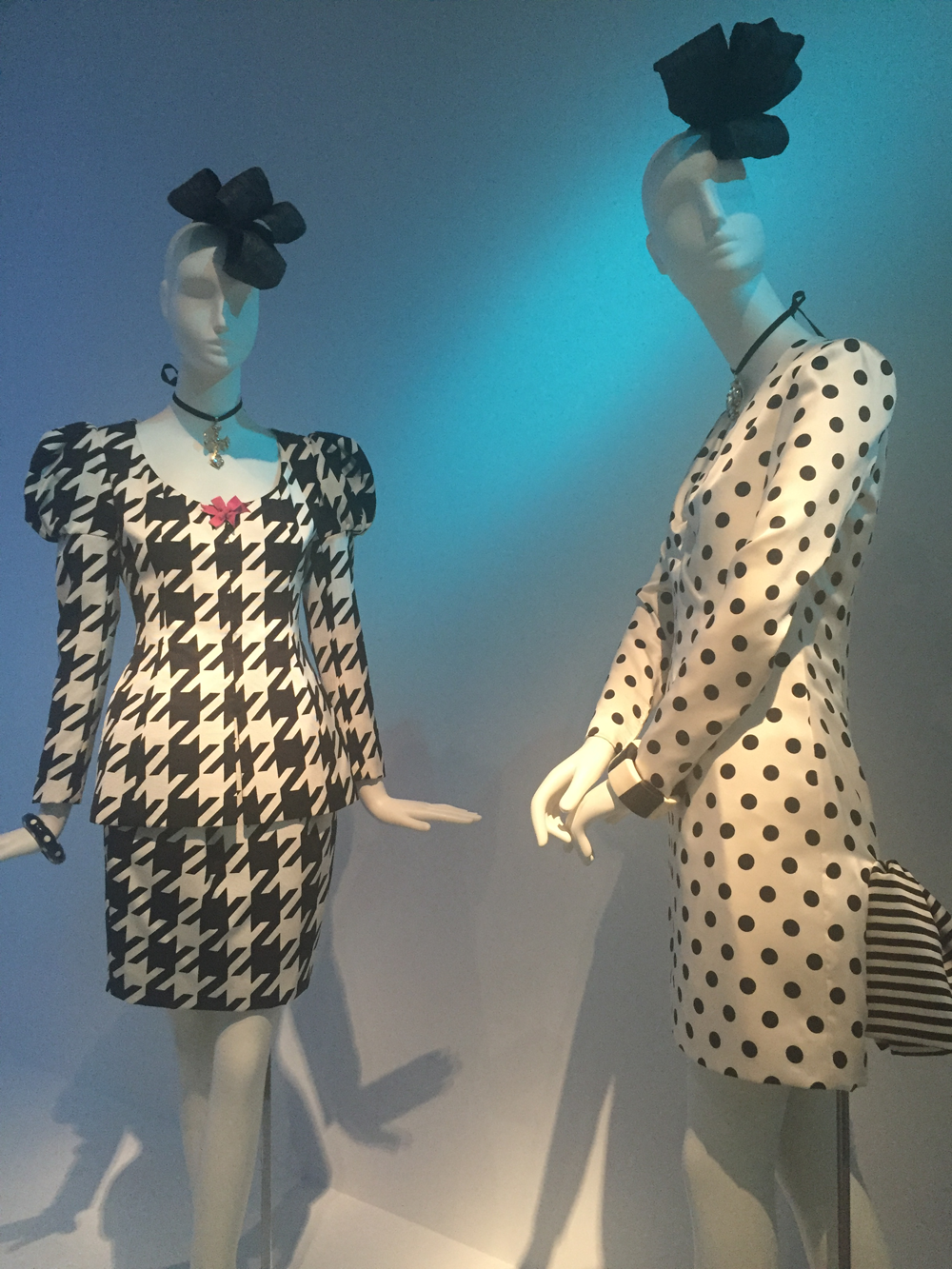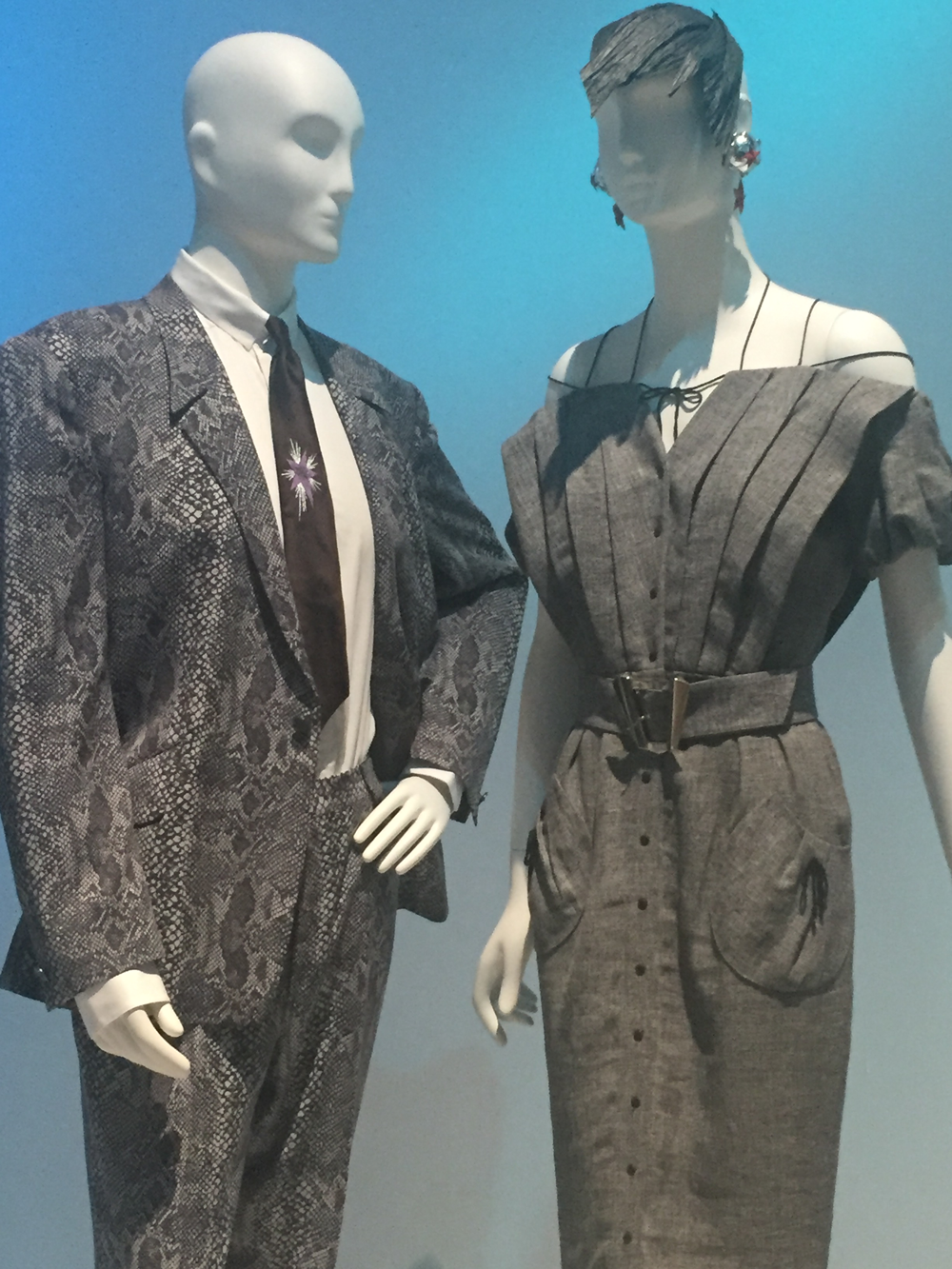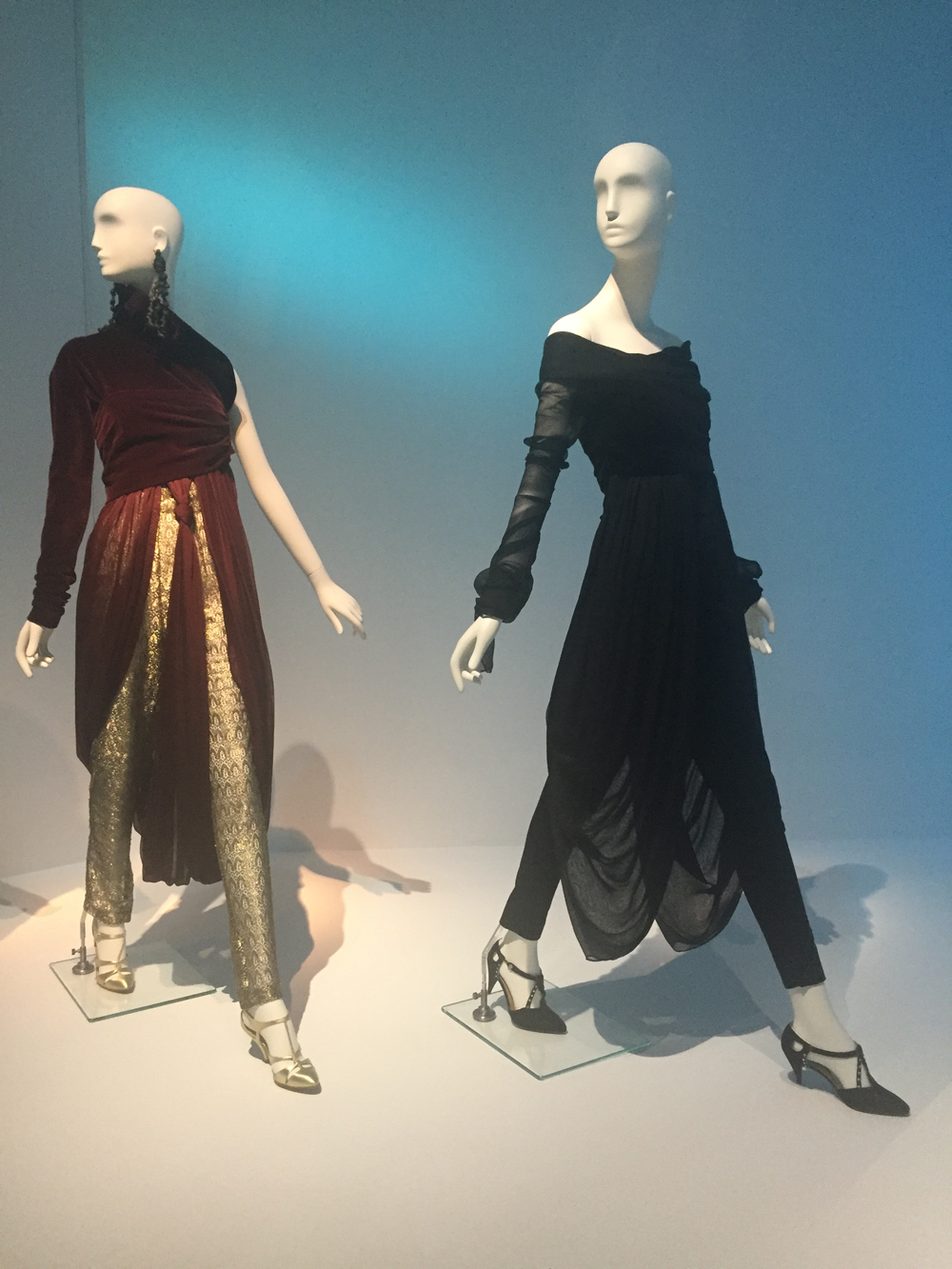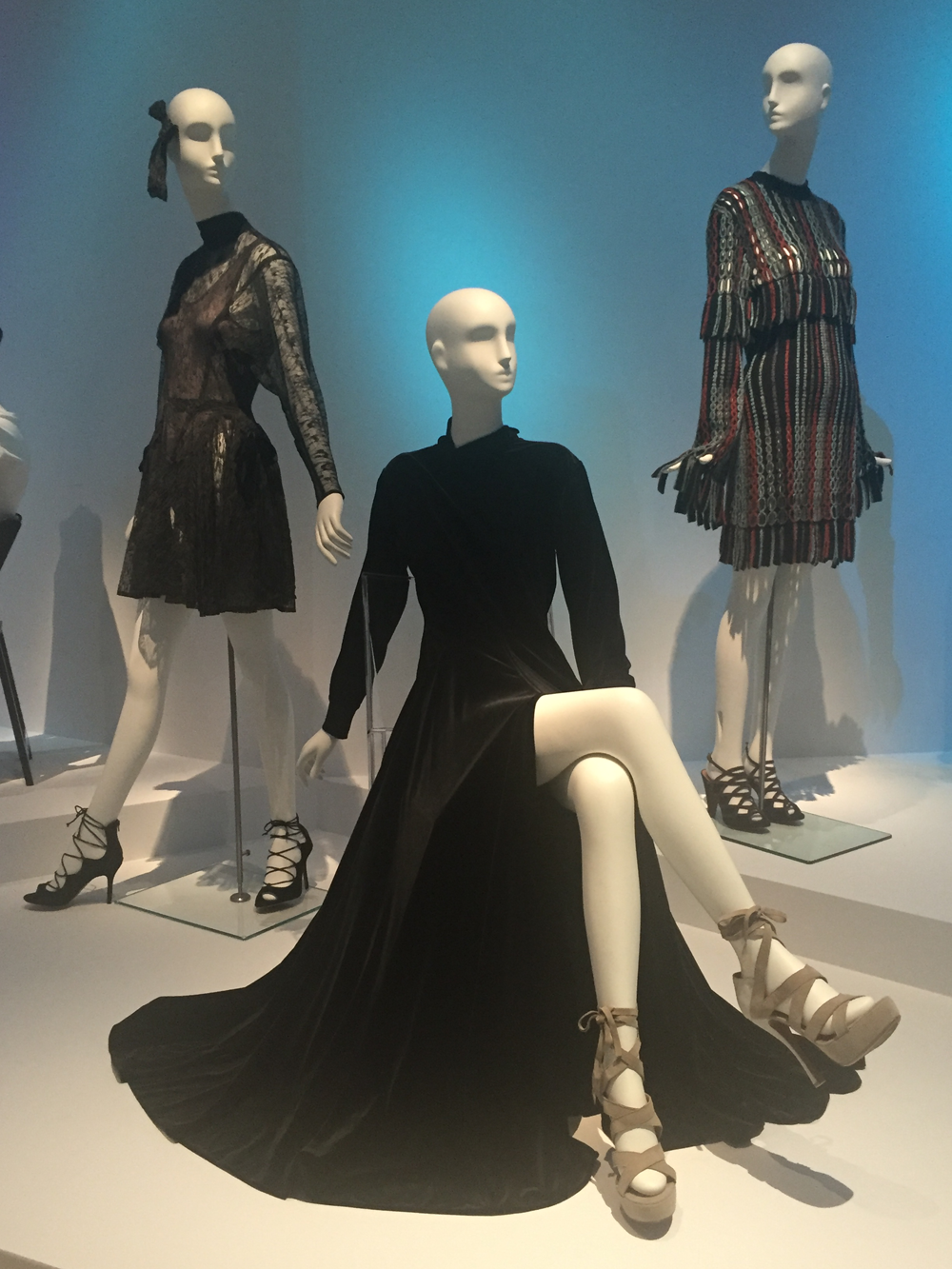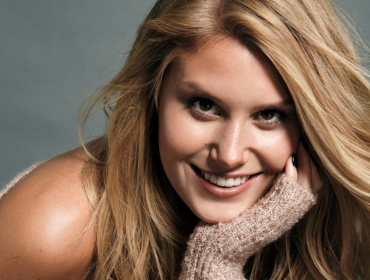Emphatics exhibition brings European designs to Phoenix by way of Pittsburgh
A new exhibition acquired by the Phoenix Art Museum opens today through Jan. 16th, featuring an avant garde array of looks from iconic designers. Karin Legato and her late husband James Legato, finely curated the collection to include fashions and accessories from designers such as Jean Paul Gaultier, Thierry Mugler, Alexander McQueen, Issey Miyake, Thierry Mugler, John Galliano, Romeo Gigli, and Azzedine Alaïa. Also on display are original runway show invitations, videos and other materials—spanning 1963-2013.
James Legato launched Legato Hair Fashions in Pittsburgh in 1963 and in 1968 expanded his family’s salon to included high-end luxury apparel, so that he could style his clientele from head-to-toe. This new space was called Emphatics. Legato met his future wife in 1969 and she became his muse. The rest is fashion history. I recently attended a viewing of the collection and a symposium for the new exhibition. I sat and chatted with Phoenix Art Museum Fashion Curator Dennita Sewell and Karin Legato, to get more intel on the highly coveted and curated collection.
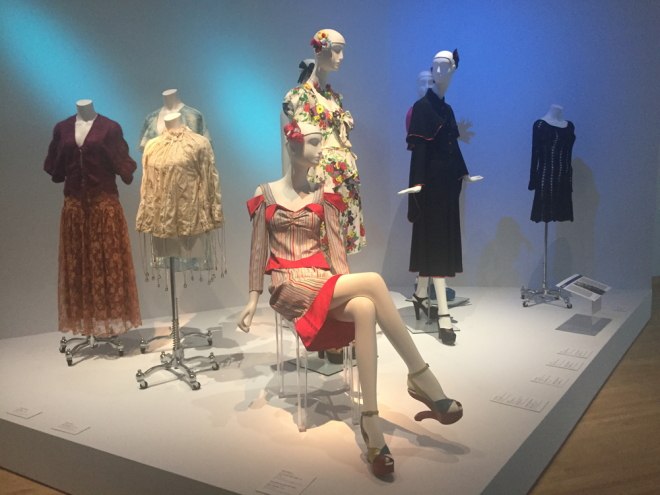
Interview with Dennita Sewell, Phoenix Art Museum Fashion Curator
Phoenix isn’t a fashion capital either and yet we’re making a strong fashion impact here with the resources the community brings together with the Arizona Costume Institute for the fashion department.
When we think of fashion we often think of the fashion capitals—New York, Paris and Milan, but the Emphatics collection was originally curated in Pittsburgh. How do you feel that knowledge impacts the fashion culture in Phoenix? I think it’s interesting because Phoenix isn’t a fashion capital either and yet we’re making a strong fashion impact here with the resources the community brings together with the Arizona Costume Institute for the fashion department. Pittsburg in the same way, shows me that you can do anything you want to, anywhere you are. Karin has had a vision and she worked hard at it. It’s a really inspiring story that it happened in Pittsburgh because it shows that, that kind of thing can be done.
What are you hoping visitors take away from viewing Emphatics? I hope they’ll be inspired. Karin Legato speaks on video in the exhibition and it’s freeing to listen to her, that she pioneered her own point of view in dressing. They pioneered their own store and neither one had business school training—they just did it and worked hard at it. It’s just an inspiring story on many levels. And, questions are being asked in fashion right now, you know serious questions. Should we continue to do fashion shows? What should the calendar be and the whole manufacturing thing? To be able to showcase someone who’s been an independent spirit all this time and has been successful at it, I think it is really important.
Interview with Karin Legato, Collector of Emphatics
That was the youth revolution back then. We were part of that. We were rebellious, we were breaking rules and tradition—that was kind of our path.
Why the name Emphatics? My husband named it that—it was before me. He wanted it bold, striking, definite. It was his vision.
You have pieces that span over time. What do you see as the evolution of the fashion in Emphatics versus what we see in today’s fashion? I think a lot of what you see in there is current. We bought and edited them. Integrity was very important. It wasn’t just new cutting edge designs. It was the artistry and integrity. Integrity also meant that things were well made and would last through time. My husband said, “If something is well done and well made it is like a Picasso. If it is not, it’s just trash.” So we used that as a model. That’s how we curated and picked pieces.
What do you hope visitors take away? Because of the way people think of fashion nowadays, they don’t understand that this is the beginning of what the industry has become today. Unfortunately, I don’t like what the industry has become today. Because it has taken away this creativity. Branding has taken away the artistry and the creativity. You have designers like Louis Vuitton, even Balenciaga—this musical chairs of designers and their branding. That’s the reason McQueen killed himself. It’s all about money now. They don’t care who’s design it, it’s about the bottom line. It started with creativity. It started with designers and artists and these people were that base. That creativity and that spirit has gone. They don’t care who’s painting the picture anymore. It’s just, give me some dollars and cents, and I think that’s wrong.
For more info or to buy tickets for the Emphatics exhibition, visit phxart.org.




